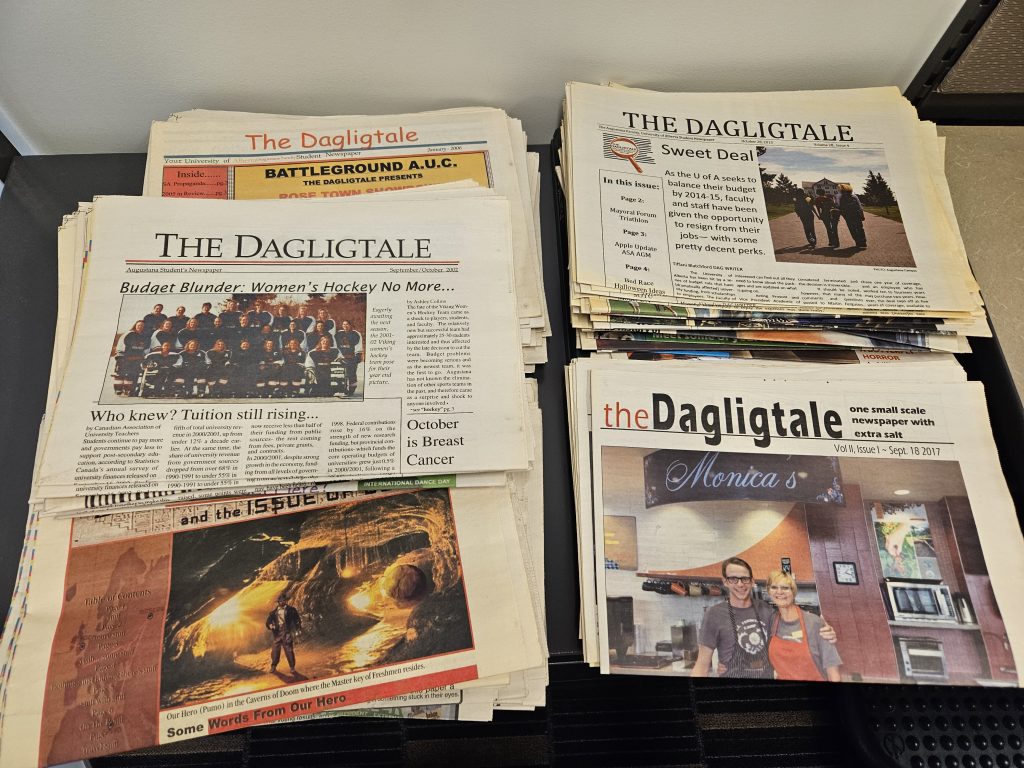Breaking news from the past: The Dagligtale, Augustana’s student newspaper, is now available online! “Dagligtale” is a Norwegian word that means everyday language.
The collection—part of the University of Alberta Library’s digitization program—includes issues from 1978 to 2020, capturing student perspectives, photos, and coverage of events on Augustana Campus (formerly Augustana University College, Camrose Lutheran University College, and Camrose Lutheran College).
From Idea to Online Archive
As a librarian at Augustana, I got the idea for this project last year while helping students research campus history for a class taught by Professor Andrea Korda. They wanted to know what life was like for past Augustana students, but few resources were available. This made me wonder: What if we could track down issues of The Dagligtale and make them accessible online? Future students could then explore student voices of the past.

With help from the alumni office, the Augustana Students’ Association, and others across campus, we located more than 150 issues of the paper. The Library’s Digitization Team then scanned all of the issues and uploaded them to the Internet Archive, preserving this record of student life.
Student Exhibition Project
The digitized collection is already sparking new ideas. Students Jacob Griffith and Devyn Waldie are completing a directed reading course with Professor Korda, where they’re creating an online exhibition about The Dagligtale.
Korda said she was inspired to offer the course because it “gives students a hands-on curatorial experience,” an opportunity they might not otherwise have at Augustana. As part of the course, Griffith and Waldie will also learn to create a website to host the exhibition.
They began their project by browsing the newly digitized Dagligtale, and they noticed how it had evolved over time. Early issues resemble newsletters—short and straightforward—while later issues feature more creative submissions, photos, and interactive content like word games. Waldie described the immersive experience of reading the paper: “When you read some of the articles, it really felt like you were there.” Griffith was especially drawn to the photo spreads showcasing campus events, like the Viking Cup hockey tournament in 1984.

Griffith and Waldie aim to launch their exhibition by the end of December and will present their work at the Augustana Student Academic Conference on December 12.
Explore the Library’s Digitized Collections
Other publications in the Library’s digitized collections include Augustana yearbooks (1940–2006), U of A student newspaper The Gateway (1910–2016), and prairie postcards, which include historic views of Camrose.
To explore the new collection, visit The Dagligtale on the Internet Archive. You can browse the issues by date, or use the “text contents” field to search for names or events. You might even spot a familiar face! If you have any Dagligtale issues that are missing from our online collection, we would love to hear from you. You are welcome to email me directly or contact the library.
This article was written by Kara Blizzard, Faculty Engagement Librarian at Augustana Campus Library.

